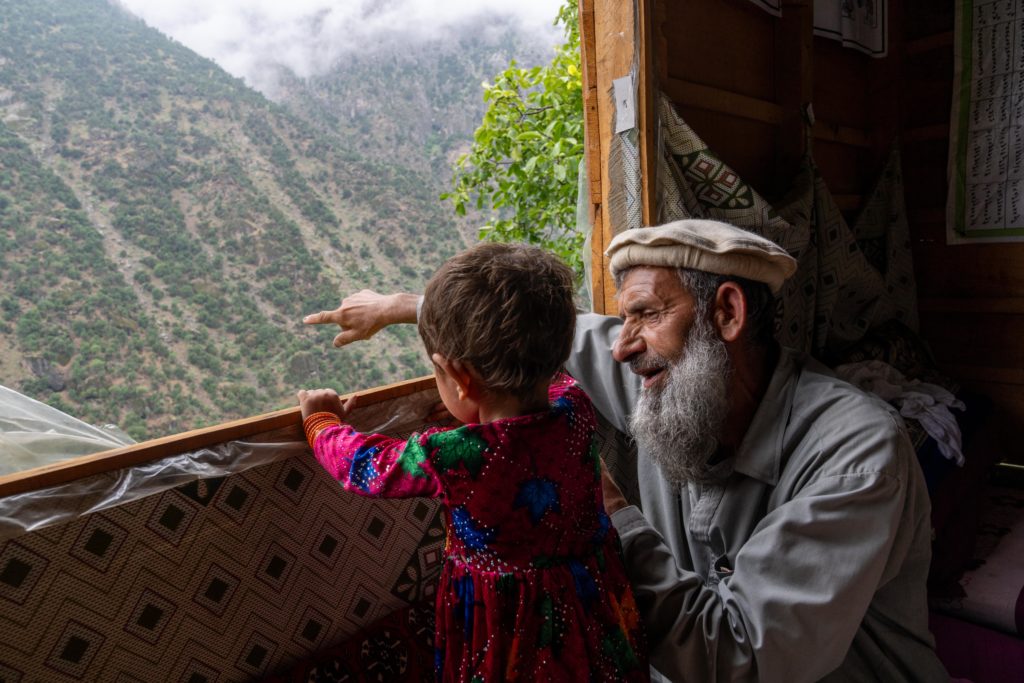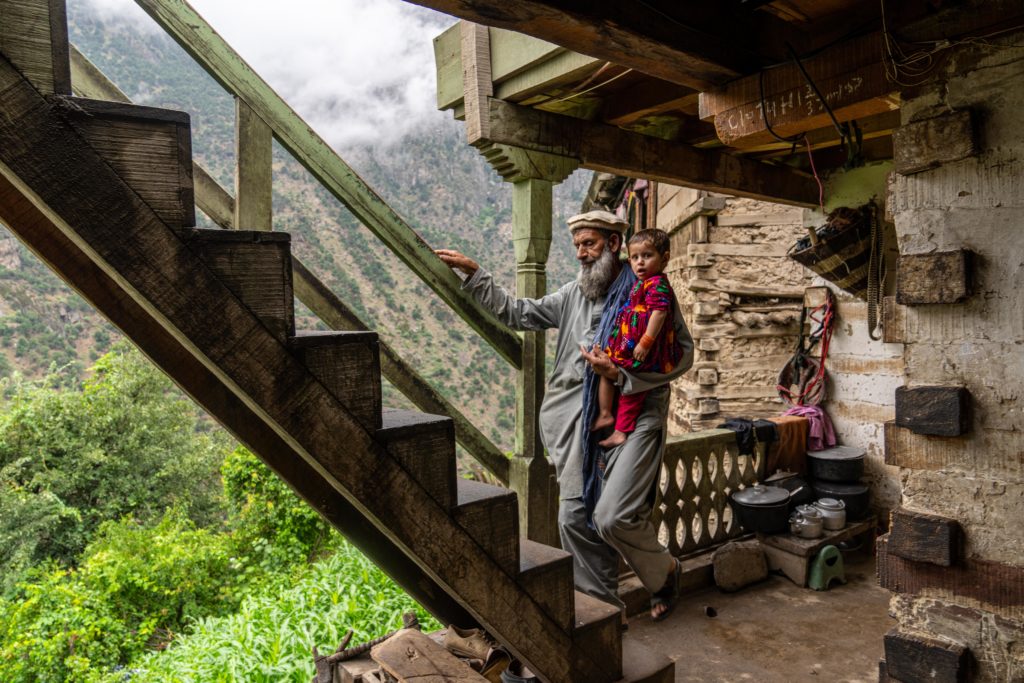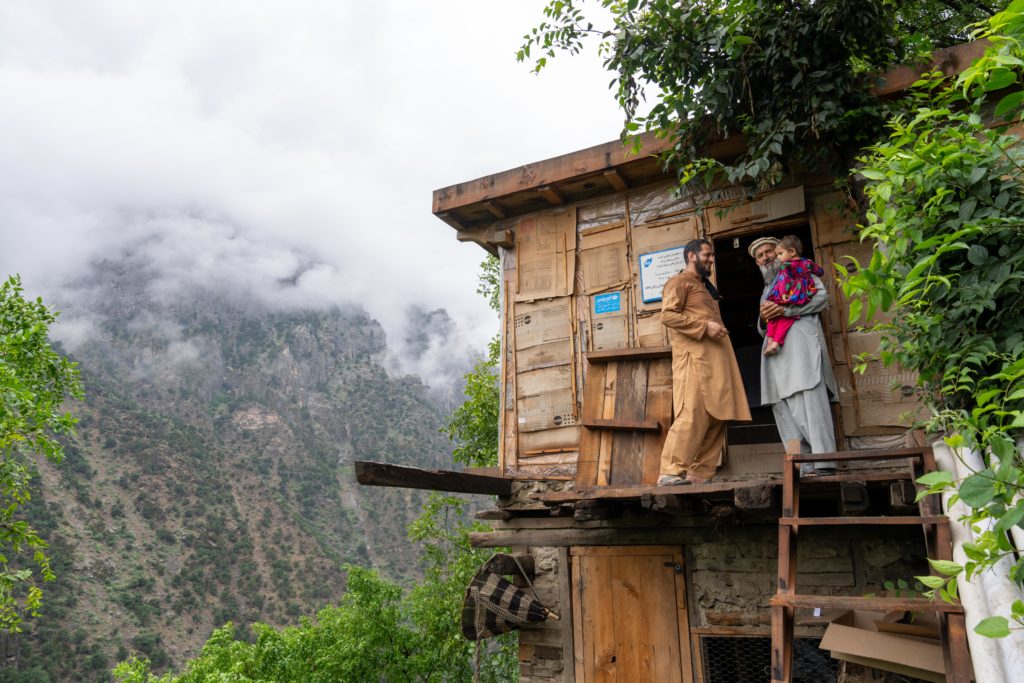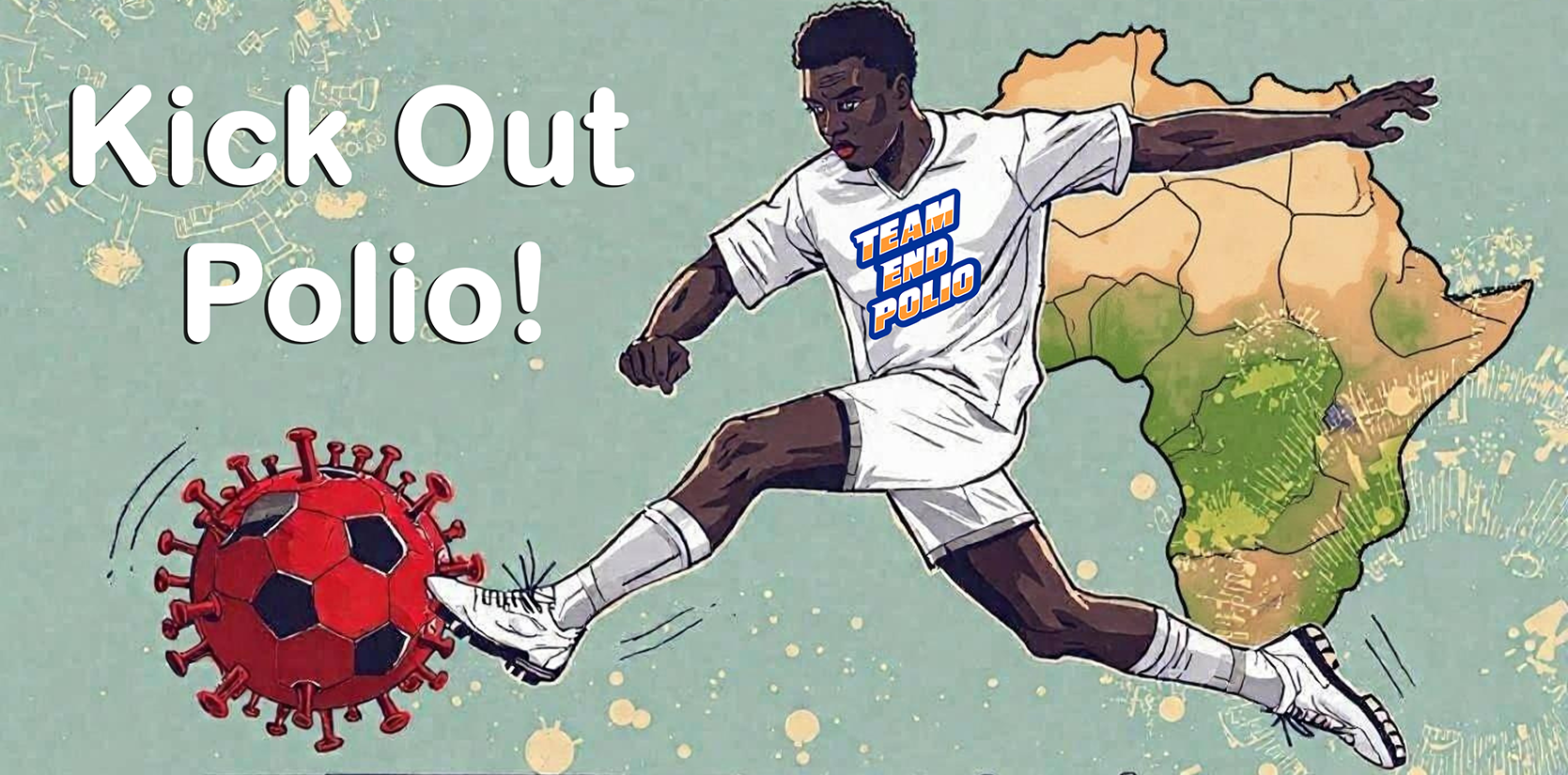
Nestled against her grandfather’s folded legs, Roqia looks solemnly at the strangers who have come to visit. Above them, the window opens onto steep-sided mountains, where the last of the morning’s rain clouds still linger, sticking to the highest trees. In February when the two-year-old developed a fever and weakness in her left leg, her grandfather made the two-hour journey down to the district hospital on foot, carrying his granddaughter in his arms. The lab results came back positive: Roqia had polio.
Roqia lives in the mountain village of Samarbagh in Nuristan, one of the remotest provinces in Afghanistan. Nuristanis have historically lived a sequestered life, cut off by towering, jagged peaks. The harsh terrain also compromises access to basic services like health care and sanitation, and a broad spectrum of nutritious foods.
Samarbagh is at the top of a mountain, a 10-hour drive from the regional capital, Jalalabad, over the solitary, precipitous road that picks its way north along the Kamdesh River. Leaving the road, we cross a rickety wooden bridge over the roaring river and climb the path that zig-zags up to the village – a cluster of wooden-framed houses clinging to the mountainside. This is the main thoroughfare, for medicines and supplies as well as for people. Here, nature rules with an iron fist – Samarbagh can be cut off for months at a time by the winter snows and springtime melt, and the frequent rains.
The villagers eke out a living from subsistence agriculture, tending to goats – the only livestock to thrive in this precipitous terrain – and harvesting the walnuts growing wild on the mountain. They mostly eat what they can produce – milk products, seasonal fruits and nuts, and what grains and pulses grow in this climate. The husband-and-wife team who provide rudimentary health care out of a one-roomed hut also double as the village schoolteachers. Their pharmacy cupboard contains mostly oral rehydration solution, antibiotics and paracetamol.

For children to grow up well-nourished and resilient to polio and other diseases, nutrition interventions must begin long before birth. Samarbagh’s low-protein diet means the majority of women of child-bearing age are anaemic, and many children show signs of malnutrition.
It’s perhaps of little surprise that Roqia was malnourished in her first years of life. She was exclusively breastfed until she was more than a year old, which is not enough: above 6 months, a growing baby needs more nourishment than breast milk alone can provide. In communities like Samarbagh where food can be scarce, especially during the winter, complementary feeding is often delayed.
Malnutrition impacts a child’s development and opens the door to diseases like polio. This is a common story across the province: almost 60 percent of Nuristani children are stunted, and 6 percent are moderately or severely wasted – 25 percent higher than the national average.[1]
Moreover, Roqia, like 95 percent of children in Nuristan, has missed some of her basic vaccinations. Her house doesn’t have a sanitation or sewerage system: the small percentage of Nuristani homes that do are down in the valleys. Combine inadequate nutrition, a lack of basic sanitation and low vaccination rates and you have a critical mass: thousands of children in these mountain villages face an elevated risk of contracting polio and other preventable diseases.

Today the little girl looks healthy. Although she spares her left leg, Roqia is walking, and upper-arm measurements confirm that her nutrition status is in the normal range. All being well, under the watchful eye of her parents and doting grandfather, her cognitive development will not be impaired – although she will probably always suffer weakness in her left leg.
In some ways, Roqia is lucky. The district hospital is within sight of the village, down in the valley far below. For children in the next valley or the next, precipitous mountain passes make for a perilous journey, especially for someone carrying a sick child. To keep the children of these mountains safe from polio, the intersecting needs that escalate their vulnerability to the virus must be addressed, comprehensively and holistically. Combined polio, routine immunization, nutrition and WASH schemes recently piloted in other high-risk parts for polio of the East Region are showing signs of success, and the argument for adapting them for Nuristan is strong, however challenging it may be. The geography that isolates villages like Samarbagh does not quarantine them from polio. These children are more at risk, not less, because of it.
[1] All data in this article is from UNICEF’s most recent Multi-Indicator Cluster Survey for Afghanistan, accessible here: UNICEF MICS (2022-23).

